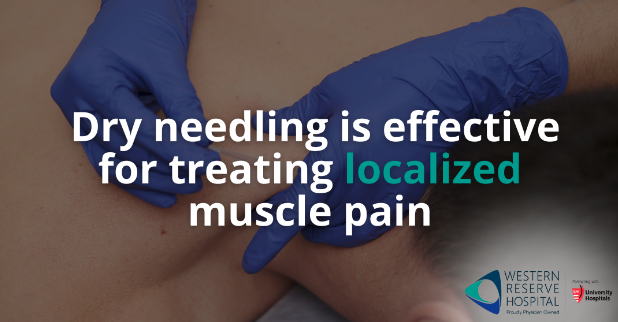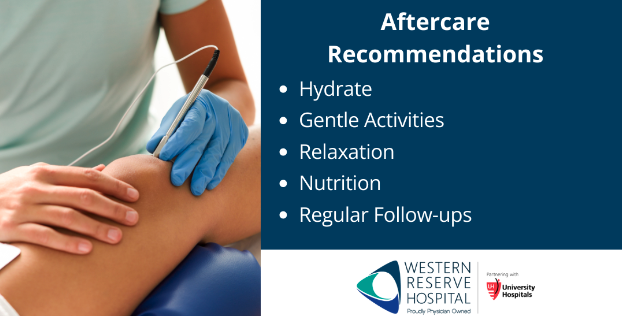Pain relief often requires a multifaceted approach, and combining chiropractic care with acupuncture provides a comprehensive treatment strategy that addresses different aspects of pain. Dr. Jeremy Coffey, a chiropractor at Western Reserve Hospital, explains how acupuncture can be effectively integrated into a multifaceted plan for managing chronic pain.
Effectiveness of Combined Treatments
Combining chiropractic adjustments with acupuncture represents a powerful approach to treating common yet debilitating conditions such as neck pain, headaches, and lower back issues. Dr. Coffey explains that "They can work together because they target slightly different aspects of the body. Chiropractic primarily focuses on the joints and muscles, working more mechanically with the body, whereas acupuncture targets the neurological system." This dual modality leverages the mechanical manipulation of chiropractic care with the subtle energetic adjustments of acupuncture.
Neck Pain: Neck pain often stems from poor posture, trauma, or chronic strain. Chiropractic care can alleviate this pain by realigning the spine, reducing pressure on nerves, and restoring normal function. When combined with acupuncture, which releases endorphins and affects the way pain signals are processed by the brain, patients often experience significant reductions in pain and improvement in mobility.
Headaches: Headaches, particularly those originating from tension or migraines, can be effectively managed through chiropractic and acupuncture. Chiropractic adjustments help alleviate the tension in the neck and upper back, often a contributor to tension headaches. Acupuncture complements this by addressing the neurological components, helping to mitigate the frequency and intensity of migraine episodes. Dr. Coffey notes, "These treatments can be effective for nearly anything but have shown remarkable results in the management of chronic headaches, offering a non-pharmacological option for relief."
Lower Back Issues: Lower back pain is one of the most common reasons patients seek out chiropractic care. The addition of acupuncture can enhance these effects by stimulating specific points that help reduce inflammation and promote healing. This is particularly beneficial for those with chronic lower back pain, where inflammation and nerve irritation persist over time.
By utilizing both chiropractic adjustments and acupuncture, patients benefit from a holistic approach that not only addresses the immediate symptoms but also promotes long-term health and wellness. This combined approach not only alleviates pain but also works to correct the underlying imbalances that contribute to it, offering a compelling alternative to conventional medical treatments.
Understanding Acupuncture and Dry Needling
Acupuncture and dry needling, though often confused, are distinct practices with specific medical purposes. Each method exhibits its own unique approach and methodology.
As explained by Dr. Coffey, acupuncture is "a therapeutic system aimed at stimulating the nervous system to provoke a specific response." This involves inserting thin needles at precise points along the body's meridians or channels. By stimulating these points, acupuncture seeks to restore health by provoking the body's natural healing response, which includes releasing endorphins and other natural body chemicals that mitigate pain and promote relaxation. It's often used for pain relief but also has broader applications including stress management, digestive health, and immune system support.

In contrast, dry needling is a technique most commonly used by physical therapists to treat muscle pain and dysfunction. It targets specific muscular trigger points to alleviate pain and improve range of motion. Dr. Coffey describes dry needling as "an active process where the needle is moved around after insertion to stimulate the trigger points directly." This technique is particularly effective for treating localized muscle pain as well as myofascial pain.
Benefits of Dual Approach for Chronic Pain
Chronic pain management often necessitates a diversified treatment strategy to effectively address the various underlying causes of pain. At the Center for Pain Management at Western Reserve Hospital, Dr. Coffey and his colleagues work together to help you conquer your pain. Within the chiropractic department, many patients benefit from a dual approach of traditional chiropractic care and acupuncture as a part of their treatment. This dual approach is potent because:
- Chiropractic Care: Focuses on the mechanical aspects of health by adjusting the spine and other parts of the body. These adjustments help improve spinal alignment, relieve pressure on the nervous system, and enhance bodily function. This approach is particularly effective in resolving structural imbalances that contribute to chronic pain.
- Acupuncture: Complements chiropractic care by targeting the body's energy flow and nervous system. It works by triggering the body’s natural pain-relieving and anti-inflammatory responses. Acupuncture is excellent for reducing inflammation, calming the nervous system, and alleviating stress and tension that often accompany chronic pain.
Dr. Coffey points out, "This multi-faceted approach not only addresses the physical manifestations of pain but also the neurological and emotional aspects, enhancing the effectiveness of treatment and increasing the likelihood of alleviating pain more effectively." Patients benefit from a comprehensive treatment plan that combines the strength of both modalities, offering a more complete solution to chronic pain management.
Expected Outcomes and Treatment Duration
When undertaking a treatment regimen that includes both chiropractic adjustments and acupuncture, the initial phase typically involves four to six visits. This schedule allows your care team to monitor how the body responds to the treatments. "Chronic pain can be persistent, so it might take time to see significant changes," Dr. Coffey notes.
- Initial Response: Some patients may experience immediate relief after the first few sessions. This quick response is often due to the sudden easing of pressure on nerves and the reduction of muscle tension.
- Gradual Improvement: Other patients might observe a more gradual improvement, which is common with chronic conditions. Over time, the combination of chiropractic and acupuncture can lead to significant reductions in pain and enhancements in quality of life.
- Ongoing Assessment: Dr. Coffey emphasizes the importance of continually assessing the effectiveness of the treatment. Adjustments to the treatment plan may be necessary based on the patient’s response.
- Long-term Management: For many patients, ongoing treatments may be required to maintain the benefits and prevent the recurrence of pain. A personalized approach is recommended, adjusting the frequency of visits based on individual progress and needs.
Dr. Coffey explains, "Establishing a trial period, typically four to six weeks, allows us to assess how effectively the treatments are managing the pain and adjust our approach based on the response." This thoughtful approach ensures that each patient’s treatment plan is optimized for their specific conditions and health goals.
Holistic Pain Management and Aftercare
Holistic pain management recognizes that pain is not just a physical experience but can be influenced by emotional, social, and environmental factors. Integrating chiropractic and acupuncture can be an extremely effective part of a holistic treatment plan for chronic pain. "These modalities work in concert to address not only the physical symptoms but also to promote overall health and wellbeing," Dr. Coffey notes. Not only does acupuncture help reduce inflammation, soothe nerve irritation, and increase blood flow, which accelerates healing but it is also known for its ability to reduce stress and anxiety, which are often components of chronic pain.
The Importance of Aftercare
Thoughtful aftercare is an extremely important way to maximize the benefits of the treatments. Aftercare is an extension of the holistic approach, ensuring that the healing continues even after leaving the clinic.
Here are the key components of effective aftercare:

- Hydration: Drinking more water is crucial after treatments like acupuncture, which can release toxins from the body’s tissues. Hydration helps flush these toxins out and promotes better overall body function.
- Gentle Activities: Engaging in gentle activities such as walking or light stretching can help maintain the benefits of the treatment. These activities keep the body mobile and can prevent stiffness, encouraging a healthier range of motion and circulation.
- Mindfulness and Relaxation: Practices such as meditation, deep breathing, or yoga can further enhance the effects of chiropractic care and acupuncture by reducing stress and improving body awareness.
- Diet and Nutrition: A balanced diet rich in anti-inflammatory foods can support tissue healing and pain reduction. Patients are encouraged to discuss their diet with their healthcare provider to ensure it supports their treatment goals.
- Regular Follow-ups: Regular check-ups with the chiropractor and acupuncturist help to monitor progress and adjust treatment plans as necessary, ensuring that the patient’s recovery is on track and responding well to the interventions.
Dr. Coffey concludes, "Aftercare is not just a supplement to treatment; it’s a critical component of it. These activities and practices aren’t just good post-treatment; they are beneficial at any time to support overall well-being."
Why Choose Dr. Coffey and Western Reserve Hospital?
Western Reserve Hospital provides acupuncture and chiropractic care as a part of comprehensive treatment plans that are highly effective in managing chronic pain. Dr. Coffey uses a multi-disciplinary approach, working with specialists in various areas of care depending on patients' needs, to ensure patients receive the best possible care.
Looking for chiropractic treatment for chronic pain? Reach out to Dr. Coffey to set up a consultation to explore chiropractic care as a part of your treatment plan.
